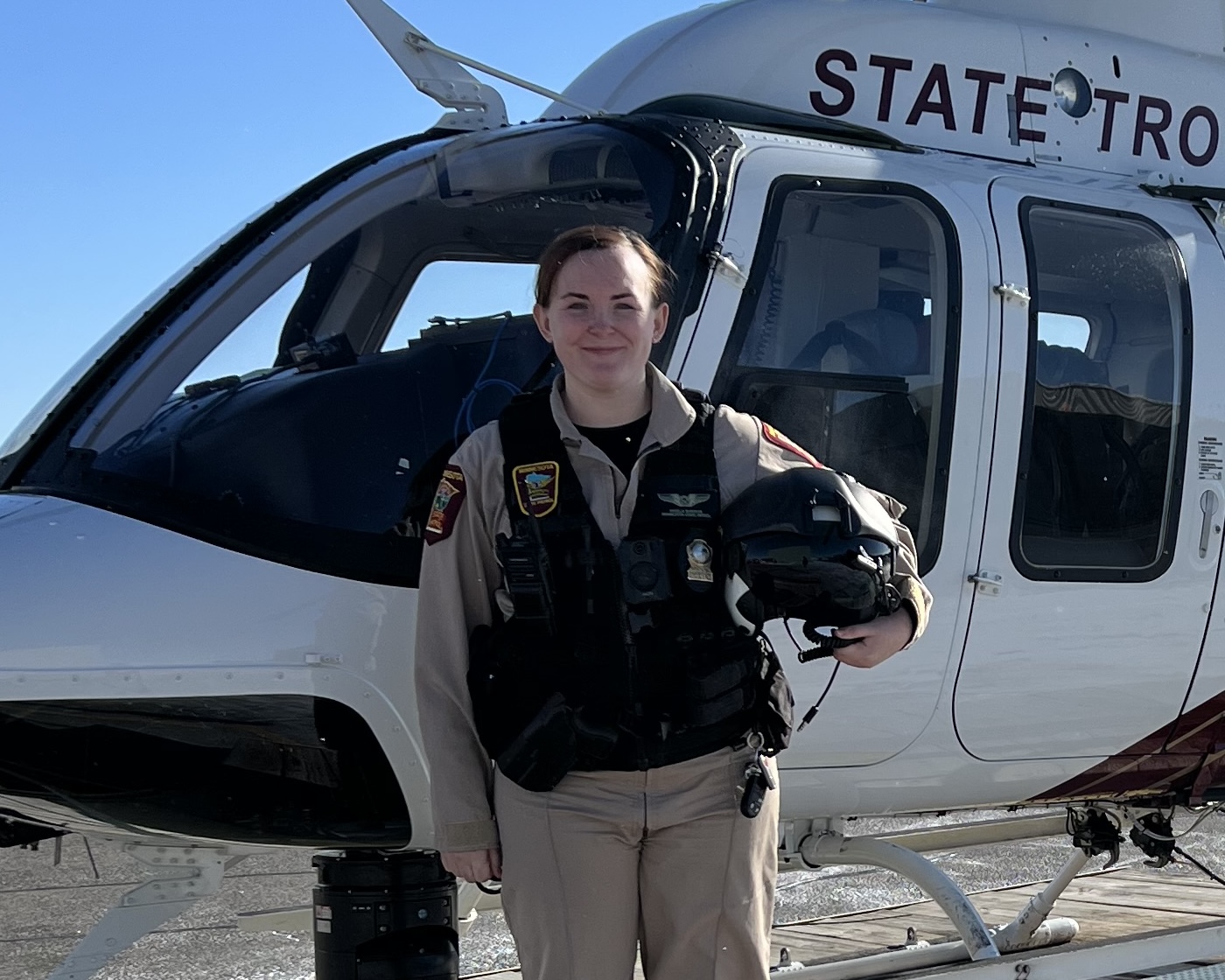CWO3 Angela Burdick
Minnesota State Patrol
St. Paul, Minnesota

Why did you become a police officer?
I have always had a strong drive for public service. I enlisted in the Army National Guard as a Black Hawk Mechanic at age 17. I then earned my bachelor’s degree in Commercial Aviation – Helicopters from the University of North Dakota. While in college, I learned more about airborne law enforcement and knew that was what I wanted to do. I asked my professor how to get into this very small field, to which he replied that I wasn’t a police officer, so they would not hire me. I later met a Minnesota State Trooper Pilot at a fly-in event who told me about the Minnesota State Patrol and the LETO program. After extensive and rigorous training, I was sworn in as a Minnesota State Trooper. I became a Minnesota State Trooper to help people—whether on the road, bringing calmness to someone on their worst day, or as a pilot, relocating a missing person with their family.
What motivates you to succeed?
My family motivates me to succeed. I am a first-generation college graduate, the only pilot in my family, and the only police officer in my family. As a young person, I was always told “no” or that I wouldn’t succeed. My motivation to succeed was to prove those people wrong—and I did. Also, I want to change the path for my daughter. She will grow up in a home where she has a strong mother to look up to and a support system that encourages her to accomplish anything she sets her mind to.
What’s your most memorable moment on the job?
My most memorable moment on the job was my first pursuit in the helicopter with the pilot who recruited me. It had been six years since I first met him and learned about the Minnesota State Patrol Aviation Unit. After six long years of hard work and determination, I was sitting in the helicopter, doing my dream job of ending dangerous pursuits from the air and mitigating the risk to my ground partners and citizens on Minnesota roadways.
What challenges have you faced?
Joining the profession after 2020 and the decline in respect for policing has proven to be a challenge. However, we adapt, overcome, and treat people with the respect they deserve, even if it is not reciprocated. Another challenge I faced was during my childhood. My family did not have the means to help with college, whether through advice on the best path to take or financial support. I was told that if that’s what I wanted to do, I needed to figure it out. I dug deep, found strength and determination, and now I am at my dream job.
What advice do you have for women considering a profession in policing?
It isn’t easy, but it is an extremely rewarding and exciting career. I know many women in law enforcement who were tired of working an office job, made the switch, and haven’t looked back. Take a ride-along and see if you enjoy it. Most importantly, don’t give up when things get tough.
How we’re changing policing
The 30×30 Initiative is a coalition of police leaders, researchers, and professional organizations committed to advancing and supporting the representation, experiences, and well-being of women at all levels of law enforcement, both in the U.S. and beyond.
Research shows that women play a crucial role in building community trust, de-escalating conflict, and improving public safety outcomes, with evidence linked to reduced use of force and enhanced relationships with the communities they serve. However, women represent less than 14% of sworn officers and 20% of recruits in state and local law enforcement agencies. Additionally, about 40% of the approximately 18,000 law enforcement agencies in the U.S. have no full-time women officers (Source: Bureau of Justice Statistics).
We are collaborating with hundreds of agencies to make law enforcement a profession where qualified women who are drawn to it feel welcomed and supported while ensuring agencies address their unique needs and foster their success.